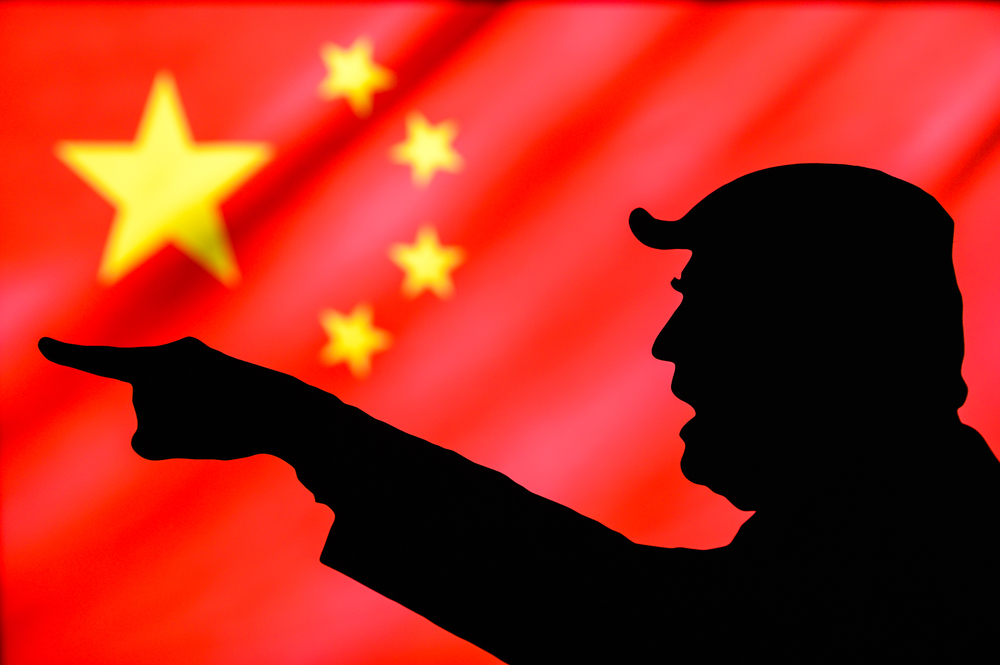100 Percent Tariffs on China? How Trump’s Moves Are Shaking the Global Economy
President Donald Trump’s tariffs officially took effect just after midnight on Wednesday, affecting nearly all U.S. allies and fueling tensions between the United States and key trading partners in a move that has sent shockwaves through global markets. The tariffs—seen as a hallmark of Trump’s “America First” trade policy—have now raised import taxes on Chinese goods to more than 100 percent, significantly disrupting international trade and escalating concerns of an impending global recession.
The Tariffs
The new tariffs cover a wide range of goods, with China being the primary target. Trump’s administration has been vocal about its intent to punish China for what it calls unfair trade practices, intellectual property theft, and a trade imbalance. Under the new measures, tariffs on Chinese goods have spiked dramatically, leaving the import tax rates at a level that exceeds 100 percent in some categories.
U.S. businesses, especially those dependent on Chinese-made goods, are bracing for significant price hikes. American consumers could soon face increased costs for products ranging from electronics and clothing to machinery and chemicals, as these tariff hikes trickle down to retail prices. While the administration insists that these measures will pressure China to come to the negotiating table, the global economic consequences are already being felt.
China’s Retaliation: A Mirror Response
In typical fashion, China has wasted no time in retaliating against the United States’ tariffs. The Chinese government has announced its own series of levies targeting American exports, ranging from agricultural products like soybeans to automobiles and technology. These retaliatory measures are expected to hurt American farmers and manufacturers who rely on the Chinese market for sales, and it could prompt further tension in an already volatile trade environment.
Beijing’s response is seen as a calculated effort to hit back at industries that form the backbone of Trump’s support base, notably American farmers and manufacturing workers. With China’s retaliatory tariffs already hitting key sectors, American producers are left with limited options to offset the damage, raising fears of an extended trade war.
Allies Draw Up Plans for Countermeasures
While the U.S. and China remain the central focus of these new tariff escalations, other nations are also feeling the pinch of Trump’s tariff policy. Countries like Canada, the European Union, and Mexico—key trading partners of the U.S.—are scrambling to figure out how best to respond. The European Union, for example, has outlined plans to impose tariffs on a wide array of American products, from motorcycles and whiskey to agricultural products. Similarly, Canada and Mexico have announced retaliatory tariffs that specifically target industries like steel, aluminum, and dairy products.
The prospect of these tariffs could force governments to engage in complex negotiations to reduce trade barriers and avoid a full-scale trade war that could devastate global economic stability. The U.S.’s allies are also pushing back, with calls for multilateral trade discussions and a commitment to finding a more balanced and equitable approach to international trade.
Trade War Fears and Economic Concerns
The global economy is no stranger to trade tensions, but the sudden and sharp escalation of tariffs between the U.S. and its major trade partners has experts worried about the long-term ramifications. Economists fear that the growing trade war could lead to a domino effect, with countries around the world instituting protectionist measures that could stifle global economic growth.
Stock markets have already shown signs of volatility, with major indexes experiencing significant declines. The rising uncertainty is causing alarm across industries, particularly those that rely heavily on global supply chains. Small and medium-sized businesses are at particular risk, as they often lack the resources to absorb the additional costs that come with the tariffs.
Some economists warn that the economic damage from a full-blown trade war could push the global economy into a recession, stunting growth in countries that are already struggling. For developing nations, the trade war could further exacerbate poverty and inequality, with rising prices and shrinking access to affordable goods.
The Road Ahead: Negotiations and Uncertainty
As the U.S. faces growing pushback from China and its allies, many are calling for de-escalation and negotiations to ease the tensions. While Trump has indicated a willingness to engage in talks with China, the political climate in Washington suggests that his administration is unlikely to back down without significant concessions from China on trade and intellectual property issues.
It remains unclear how long the tariffs will remain in place or if the trade war will eventually subside through diplomatic efforts. What is certain, however, is that the stakes are high—both for the U.S. and for the global economy. As governments scramble to navigate the shifting trade landscape, the world watches closely, uncertain of what the future holds in this intensifying trade conflict.
Diet Coke and Arrest: YouTuber’s Wild Island Adventure Goes Wrong | Maya




